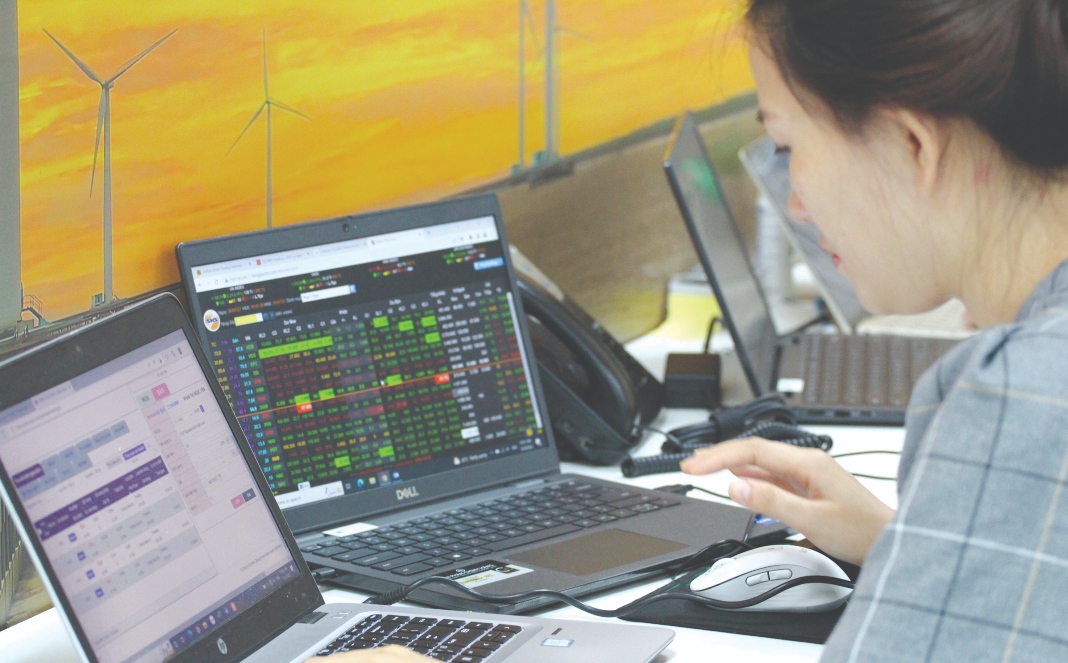Data in the past showed that the market performance in May was not always the worst. In recent years, the “selloff in May” phenomenon seems no longer a significant concern. So, is the fear of May exaggerated?
The past was not too bad
After a rise of 3.7% in March, the VN-Index reversed course and fell 2.8% in April. This development is similar to what happened in the first two months of the year, with the index gaining 3.1% in January but then losing 3.3% in February, eradicating all achievements. The fluctuations in the index somehow corresponded to those in the trading volume, as liquidity improved in the first half of April but worsened again toward the end of the month, with money for short-term swing trading getting withdrawn for careful observation.
The fact that the market tumbled again in April despite incentive policies and positive information that were constantly published, apart from the fact that quite a few enterprises suffered a decline in their Q1 business results as expected, is ascribed to an irrational fear that forces investors to stay less active on the market every time May approaches.
Data in the past showed that the market’s performance was not always the worst in May. Since the stock market of Vietnam was established in July 2000, the VN-Index dropped 12 times and picked up nine times in May. The years with the sharpest decrease in May were 2008 (down 21.7%), 2006 (down 12.6%), 2011 (down 10.5%), and 2012 (down 9.2%). In contrast, the years with the strongest growth in the fifth month were 2009 (up 26.7%), 2001 (up 25.6%), 2007 and 2020 (up 15.2% each) and 2013 (up 9.3%).
In recent years, the phenomenon known as “selloff in May” seems no longer a significant concern. Specifically, eight of the 12 times the market went down, as mentioned above, took place in 2012 or earlier. This trend made the profitability of the VN-Index in May over the past 21 years average out at 1.4%, the 7th highest of the 12 months of the year.
Is the fear of May exaggerated? And are investors getting wiser for taking profits early and letting go of their holdings in April, so the forthcoming sell-off in May would be an opportunity for them to buy back certain stocks? Since this trading strategy has become more and more common, it is not hard to understand why the stock market in recent years has always wrapped up May with growth instead of a steep decline as in the previous period.
Moreover, in previous years, the drastic reductions in May usually took place after the market had experienced a strong uptrend, thus prompting investors to quickly take profits or cut losses as they noticed the momentum for growth had weakened towards the end of such an uptrend. Now, it seems the market is still struggling to bottom out, and the rallies since November last year to date, if any, have been short-lived, without the actual engagement of a massive cash flow yet.
Acting on policies
It is impossible to predict anything about the market. The market is always full of surprises, even for the most seasoned investors. In response to the fluctuations of the market in a fairly narrow range recently, besides the optimistic comments expecting the VN-Index to soon break the stalemate, conquer the 1,100-point mark and further go up, some investors still believe the index will likely fall below 1,000 or even 900 points to form a double bottom pattern before it sets a new uptrend in the medium and long terms.
Following the tough period last year due to the volatility of the international market and the peculiarities of the market at home, most opinions share one point in common: the worst is over. The influence of the tight monetary policy of central banks around the globe, especially the U.S. Federal Reserve (Fed), is likely to enter its final stage. Therefore, the interest rate hike anticipated in the meeting early this month is probably the last upward adjustment by the Fed before it starts to cut rates again from the beginning of 2024 onward.
In Vietnam, the reversal in the monetary policy took place even earlier, as the State Bank of Vietnam (SBV) brought down key interest rates twice in the second half of March, while commercial banks lowered their deposit rates more aggressively than expected. This is something even the most optimistic ones would not dare to imagine in late 2022. In other words, what is happening now represents a radical change in the economic prospects of the near future, except in the case of “black swan” events whose impact no one could ever envisage.
In addition, the problems of the corporate bond and real estate markets have received proper attention recently reflected in the introduction of a series of new policies plus certain actions taken to handle the legal barriers to many projects of realty firms. Regarding the risk of bad debt piling up, debt restructuring is made possible via some recent policies, so businesses may still have access to credit and the pressure banks have to cope with when it comes to provisioning may be lessened.
In a recent report, Michael Kokalari, Chief Economist of VinaCapital, forecast Vietnam will relax the monetary policy, bringing the 12-month deposit interest rate down by 200 basis points in 2023 (to about 6%) against the beginning of the year. This expert also expected the SBV to buy some US$25 billion as foreign exchange reserves this year, which will significantly provide the banking system with ample liquidity, potentially leading to a rise of 4% in savings across the system.
The replenishment of foreign exchange reserves by the SBV, along with other measures the Government is adopting to offer banks liquidity support, is a more important monetary easing tool than the interest rate reduction policy the central bank carried out last month.

Usually, the stock market reacts more strongly to changes in the monetary policy than to those in the fiscal policy, so the return to monetary easing is seen as a crucial catalyst for market trends in the coming time.
With deposit rates having plummeted in the past two months, savings put in banks in late 2022 with a common term of six months will start to fall due in the middle of this year, expected to be shifted into the stock market again to look for new opportunities, especially when the valuation of the local market is still considered quite low.
Therefore, even if there are sell-offs that instil fear in May, it is, after all, a chance for investors to gather more stocks or re-enter the market, with expectations of a medium- and long-term uptrend gradually forming. Of course, positive results are unlikely to come anytime soon, since data in the past showed that the market was usually quite dull in June and July as well, with the VN-Index’s profitability in these two months also among the worst.









